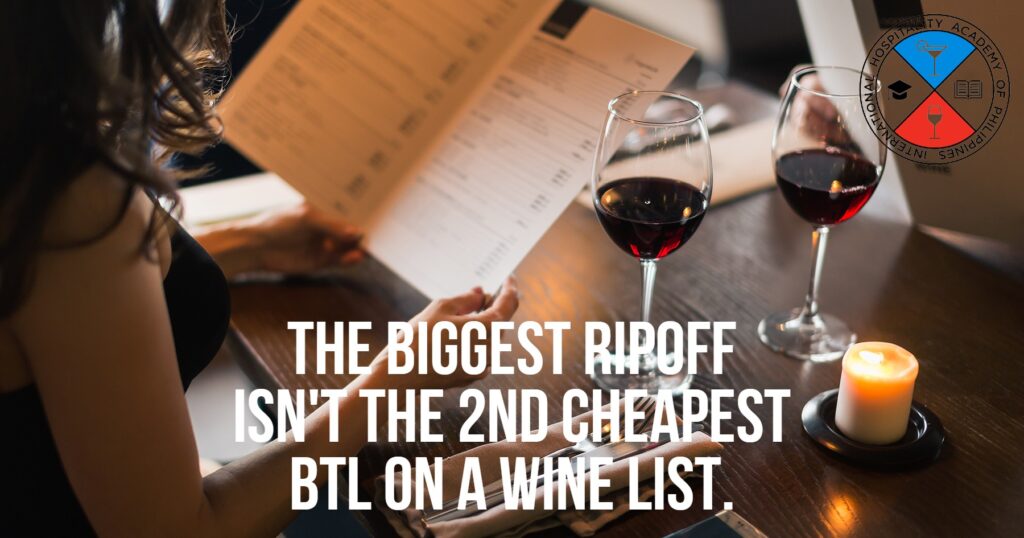That so-called common knowledge has “never been investigated empirically” suggests a new paper that claims to disprove it.
We’ve all heard this wine list theory before: The second cheapest bottle of wine is the worst value. The logic is supposedly quite simple: Customers don’t want to look cheap, so instead of the least expensive bottle, they opt for the second least expensive; but then, allegedly, restaurants take advantage of this quirk in human nature and mark up the second cheapest bottle of wine the most.
It all makes sense. Or does it? A couple of economists had a sneaking suspicion this theory wouldn’t hold water—writing that “as far as we know the claim has never been investigated empirically”—so they actually did the research. The results. found in a working paper recently published by the American Association of Wine Economists, came out exactly as they hypothesized: No, the second cheapest bottle of wine is not the biggest rip-off. In fact, the value tends to be the worst at the middle of a list.
David de Meza, a professor at the London School of Economics’ Department of Management and co-author of the paper, explained that, even if the second bottle used to be the worst value, the more traction that notion gets, the less it continues makes sense. “If the embarrassment theory is such common knowledge, one might well conclude that the second-cheapest wine becomes an even less attractive choice to diners than the cheapest since it is not only believed to be a bad buy but signals a pitiable effort to appear affluent,” he explained. “And even if diners do behave as naive behavioral types, it is not a given that all restaurateurs set out to exploit them.”
To investigate the theory, de Meza and his co-author—Vikram Pathania, a professor at the University of Sussex Business School—pulled 470 wine menus, one each of red and white, from 235 London-based restaurants that had posted their lists to Tripadvisor as of July 2015. None of the menus were over three pages long, resulting in 6,335 wines in total, or an average of about 13 bottles per menu.
From there, each of the wines was run through a price comparison website to find the best retail price—which was chosen since most consumers would be more familiar with retail prices than wholesale prices and would be using retail prices when making their own comparisons. Overall, the markup for restaurant wines was just over three times the retail price—an increase that was relatively consistent for both red and white wines.
After crunching the numbers, the paper concluded, “The mark-up on the second-cheapest wine is below that on the immediately succeeding wines. A further finding is that absolute mark-ups increase in rank whilst percentage mark-ups peak on mid-range wines.” In fact, the percentage markup tended to jump the most at the third bottle of wine, going from an under 280-percent markup on the first two bottles to an over 300-percent markup starting at the third bottle. And it didn’t really start coming back down again until the 11th bottle.
“The percentage mark-up on the second cheapest wine is significantly below that on the third, fourth, and fifth cheapest wine and well below the peak mark-up, which tends to occur around the median wine on the menu,” de Meza clarified.
With all this in mind, Pathania put forth his own logical explanation—and it has nothing to do with trying not to look cheap. “It would be reasonable to assume that at the low end of the wine, margins are kept down to encourage consumption,” he said. “At the high end, low margins induce customers’ upgrading to the more expensive wines on the list.”


